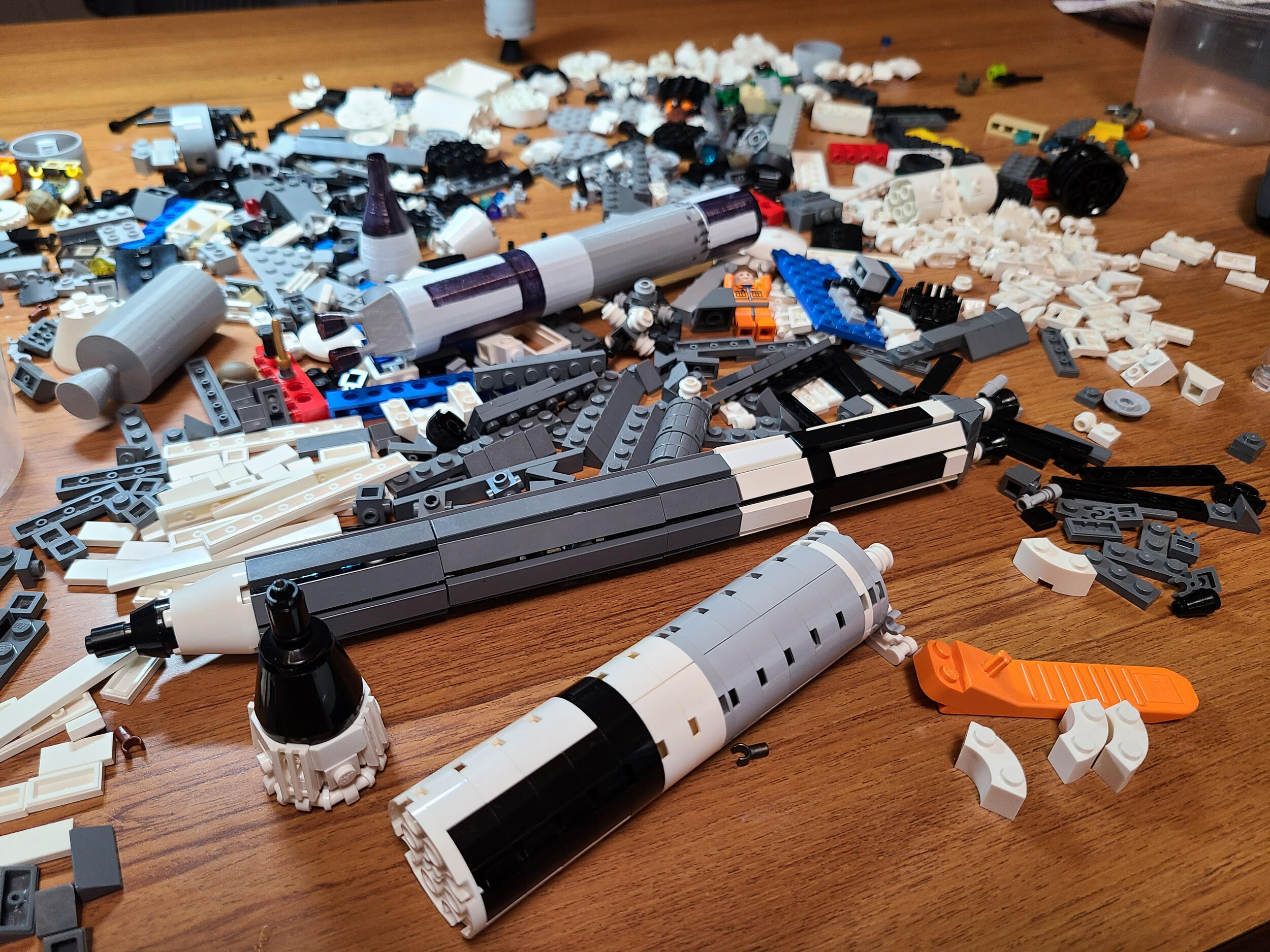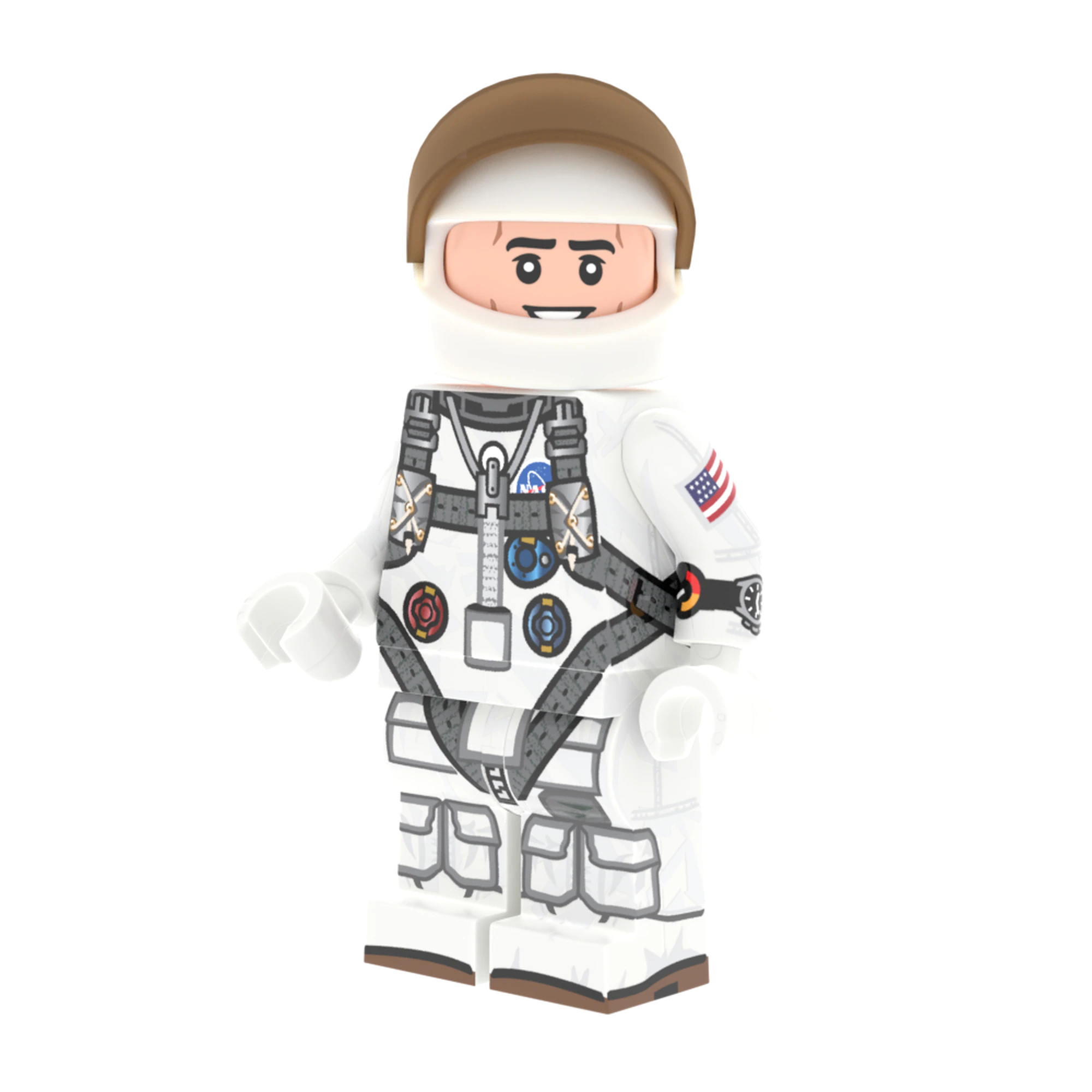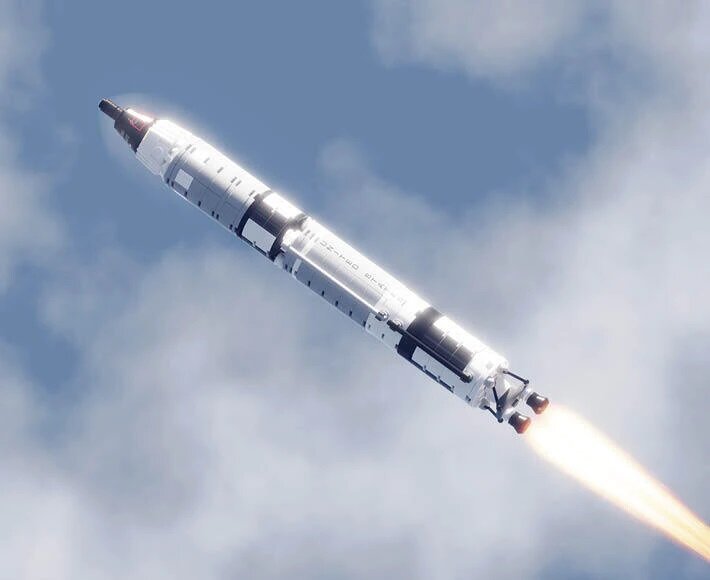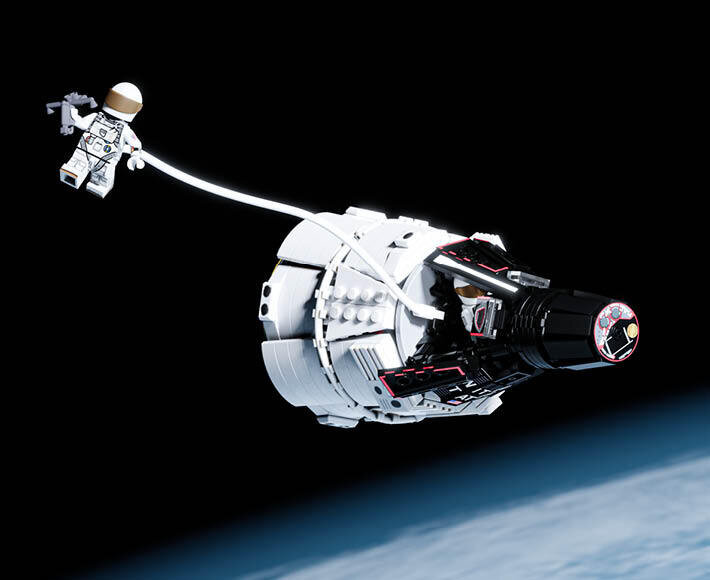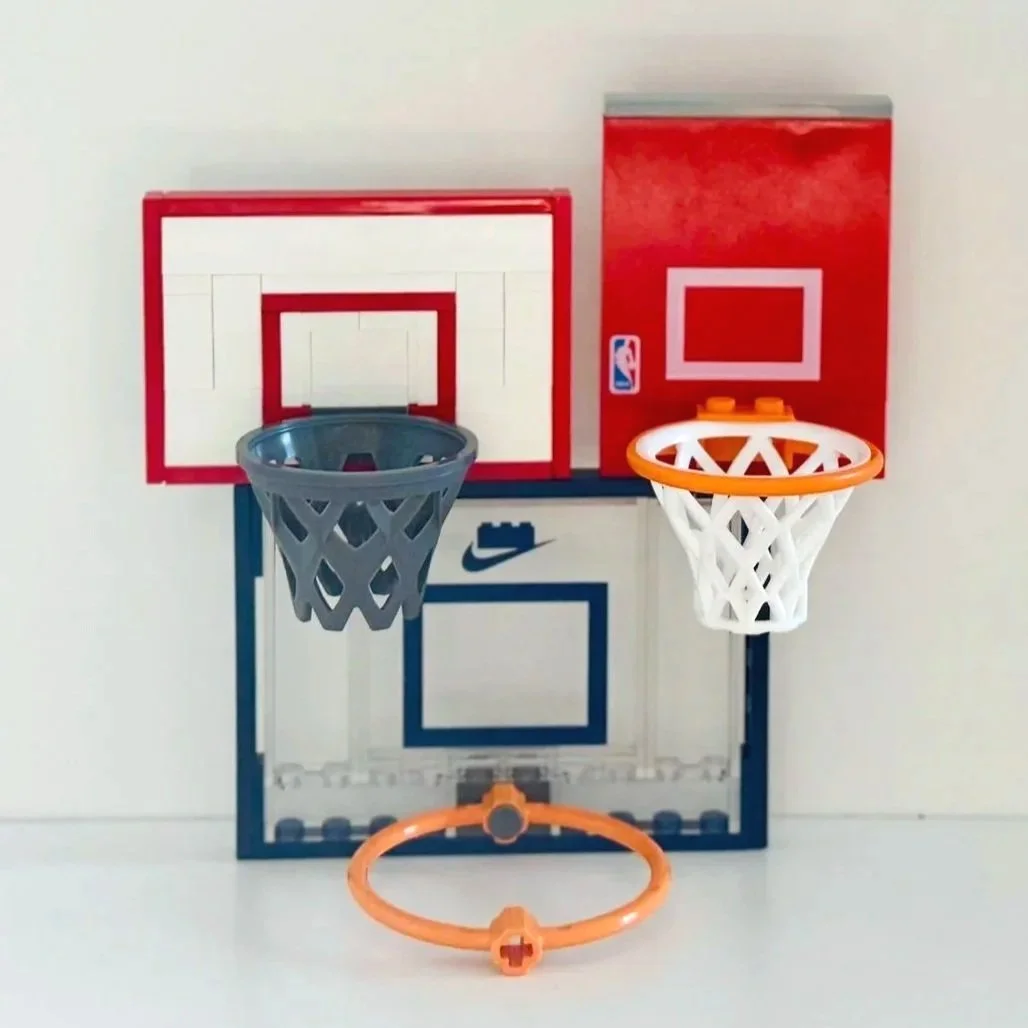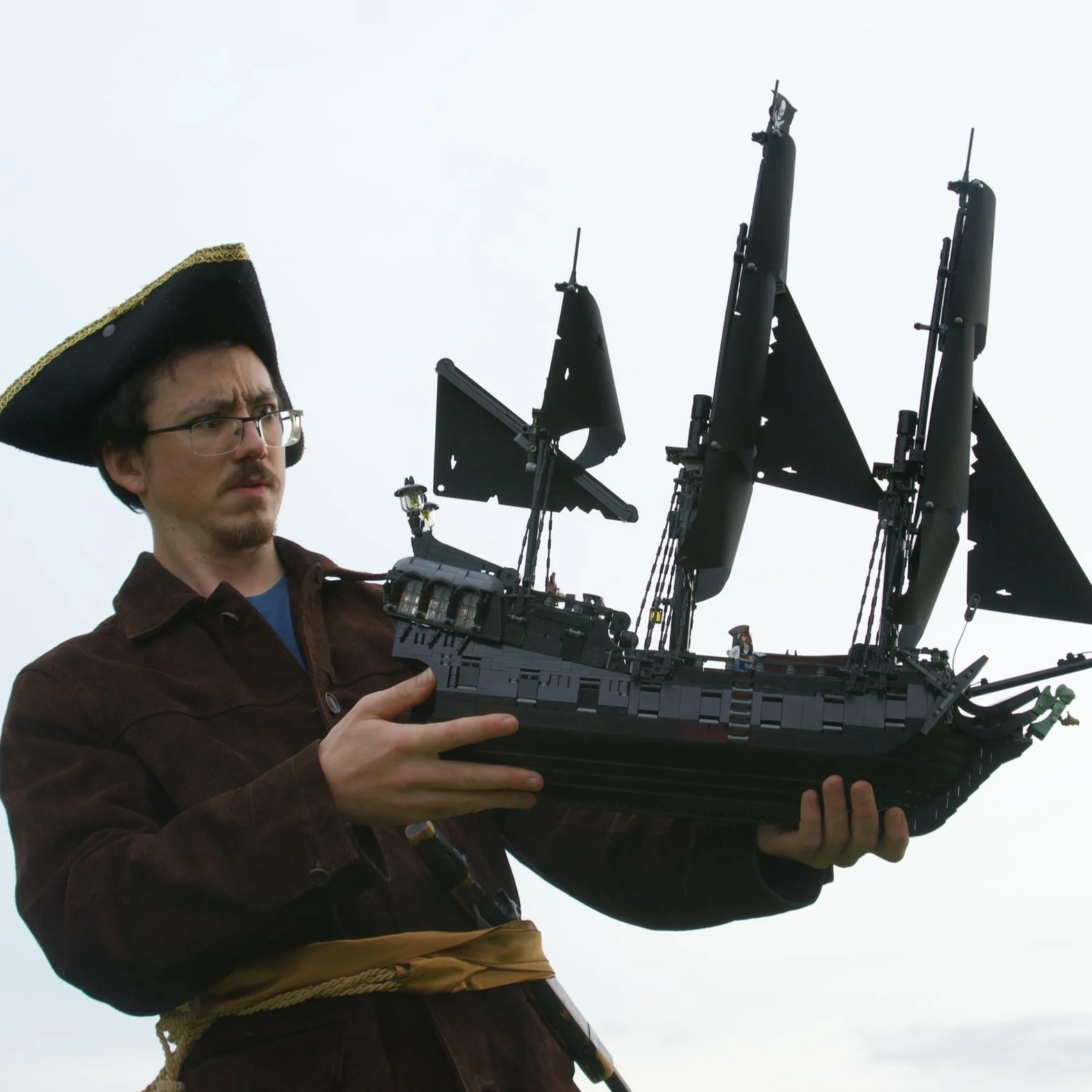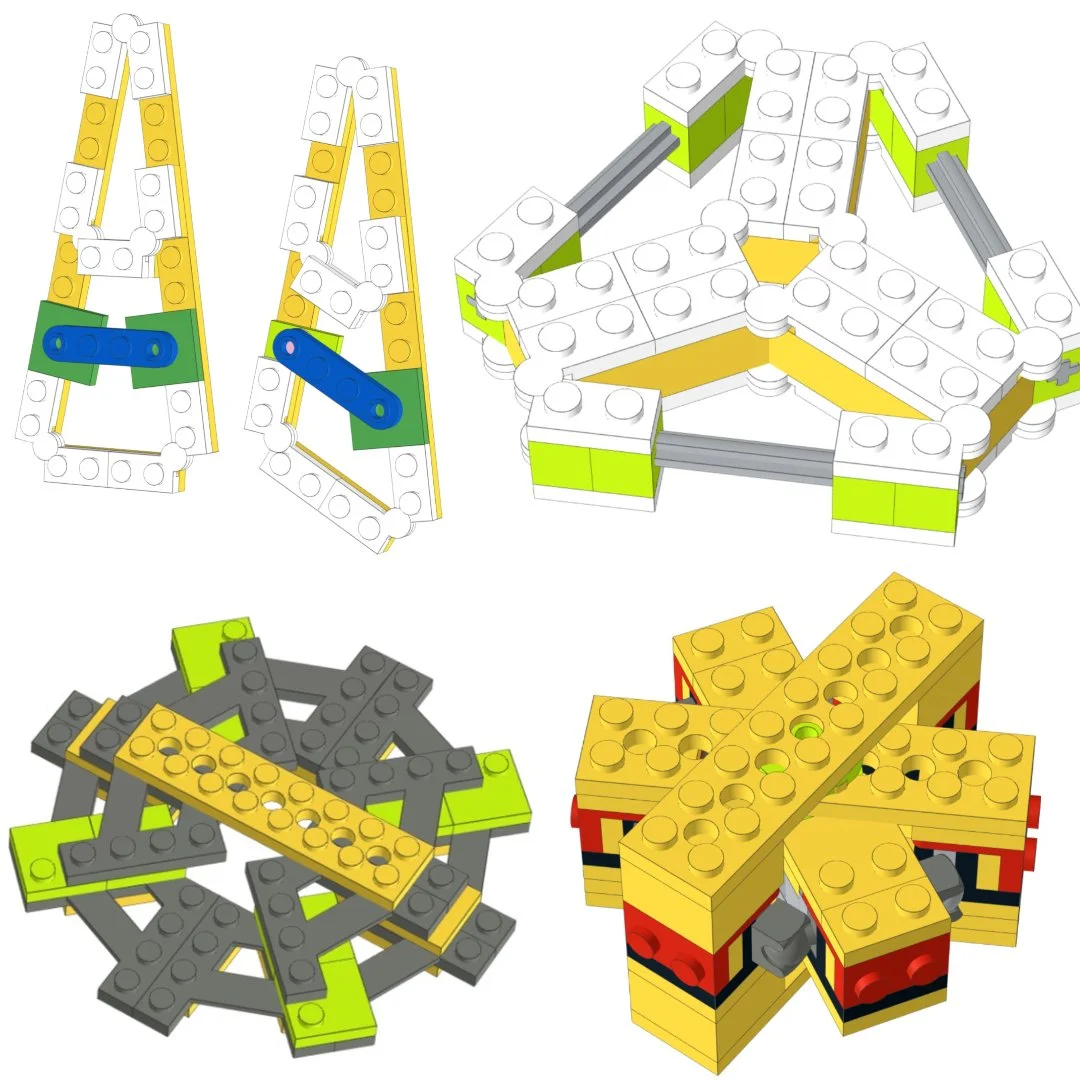The LEGO Space Race: Behind the Scenes of Brickmania's Custom Kits
/Along with massive LEGO creations displayed at conventions, Brickmania is perhaps best known in the AFOL community for producing high-quality military building kits and custom minifigures. But recently they have set their sights a bit higher—about 100 miles directly up to be exact.
To celebrate 60 years of manned spaceflight, we sat down with designers Austin “Camera Guy” Granger and Amanda Feuk who created the Titan II GLV and Gemini Spacecraft Brickmania kits. We discuss their love of space, the amount of work that goes into creating custom LEGO sets, and how they approached replicating such iconic spacecraft.
Dave: Thanks for taking the time to chat with us today! I was wondering if maybe your could each introduce yourselves a bit—maybe what you do at Brickmania and in the LEGO community?
Austin: I’m Austin but I go by Camera Guy at Brickmania. I usually work on 3D design and fabrication, animation, and video production. I’ve been a fan of almost all building systems, including LEGO, since I was about four. I went through my “dark ages” in my late teens and early twenties but very quickly pulled out of it when I discovered Brickmania. As such, I was never really a part of the AFOL community prior to working here, but I’ve been really enjoying getting to know my fellow builders at expos and conventions. I’ve found it a wonderfully creative and welcoming group.
Amanda: I’m Amanda Feuk, and I’m a 3D animator, modeler and fabricator at Brickmania. I was never a “LEGO kid” growing up. (I had a small Pirates set because I liked the monkey.) At my previous job, I worked as a teacher, and the kids always were asking me to play with them and build things. Eventually, I sat down and was very surprised to find LEGO was a very interesting medium to work in. From that point on, I have had the bug. I have been a part of the AFOL Community going on for ten-plus years now. I am also the LEGO Ambassador and President for TwinLUG.
Brickmania headquarters in Minneapolis
Dave: I always find it fascinating how AFOLs find their way back to LEGO in their lives. How did each of you get involved with Brickmania?
Austin: I was actually hired by Brickmania to build a display out of K’nex for their Toyworks space. I worked more or less independently for the first six or so months I was here. As my K’nex display build approached completion, I began to transition more and more toward the LEGO side of things. I started doing some photography and graphic design work as well as producing the Brickmania TV episodes, then I moved onto 3D renderings of our kits as well as animations.
Amanda: TwinLUG had historically been having our meetings in the Brickmania space, so I have been familiar with Brickmania for many years. One night, the then Marketing Manager made a comment that they needed a new graphic artist. I got the job and started working with Austin and the rest of the crew.
Dave: I’ve had the opportunity to make a very small custom LEGO kit, and that was no easy task! From the set design to sourcing pieces to assembly, how has working at Brickmania changed how you look at a LEGO set?
Austin: Since I was not really a part of the LEGO community prior to my working here, my understanding of what LEGO is has changed profoundly over the years. While I initially viewed LEGO as just an interesting toy, I now see it as a medium for art, creative expression, teaching, and engineering. The projects that the AFOL community can come up with to expand the LEGO medium beyond what it was originally intended to be never ceased to amaze me.
As for kit creation, the biggest thing that surprised me was how collaborative it was. Even though a box may have the name of a single designer, there is always a large team of people that go into making a kit come to life. That’s true for LEGO and that’s true for Brickmania. It includes everything from designing the artwork on the pieces, custom minifigures, 3D-printed parts, perfectly cut stickers, precision aligned UV printing, and of course coordinating the people who actually assemble and package the kits. I think it’s important for people to understand that it really does take a wide range of people with vastly different talents to make these kits a reality.
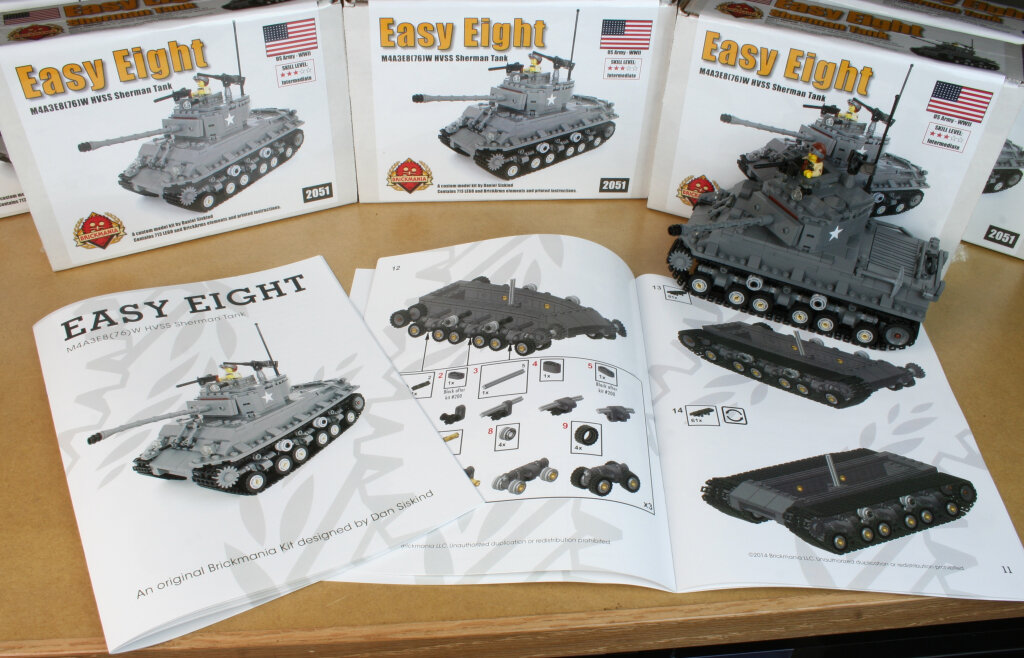
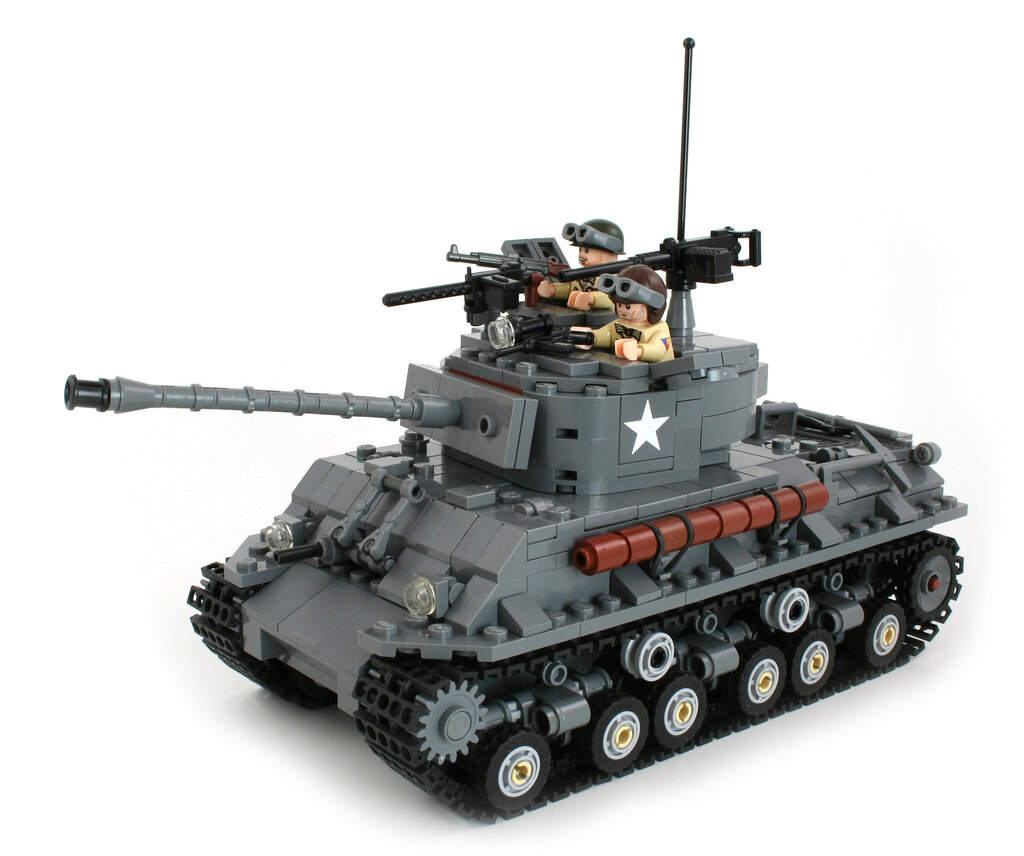
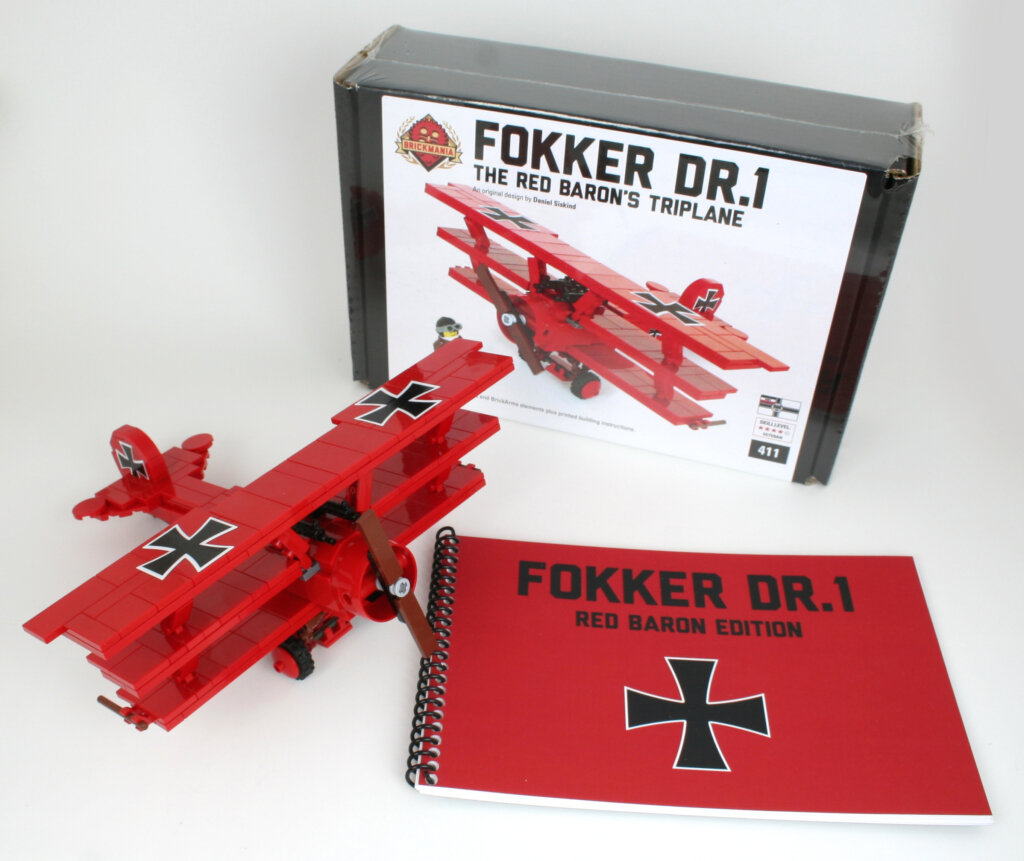
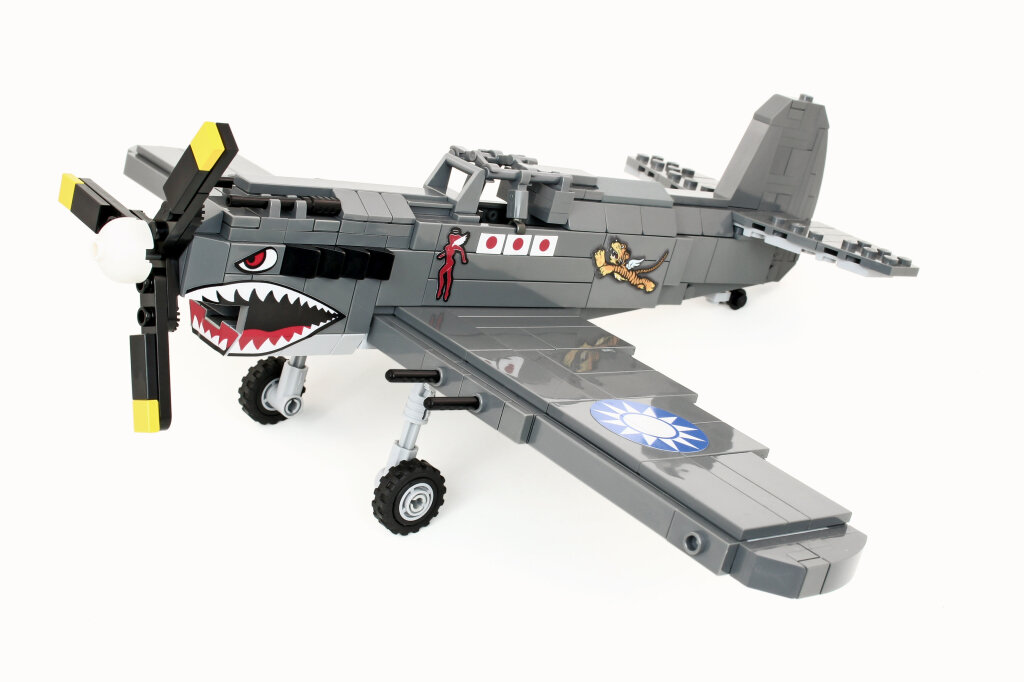
Dave: Brickmania is mostly known for military vehicle kits, but this month you are celebrating the 60th anniversary of the first man in space. Have you been space fans your whole life?
Austin: I’ve been interested in rockets and space since I was a small child, but what really turned me into the obsessive space geek I am today was seeing one of the SpaceX Falcon 9 rockets land vertically for the first time. That was one of the coolest things I’ve ever seen, and I immediately knew I had to learn more. It was no longer enough for me just to watch live streams of modern launches, I had to learn the history of how we got to this point. I started watching documentaries, YouTube videos, reading articles and books, anything I could find on the subject.
Amanda: My interest in space didn’t really come from a scientific outlook. I have always been a big reader and movie buff and often would read/watch Sci-Fi. After filling my head with the fantastic, I became interested in our own space program. My knowledge of missions and rockets is limited but I am always fascinated to learn more. Luckily, Austin has an incredible amount of knowledge on the subject. His passion for space has definitely rejuvenated my own interest.
Dave: When you were looking into the history of the Space Race, what did you find most fascinating? What captured your imagination?
Austin: For me, it was the approach to problem-solving within a tight deadline. It’s not just “how does this rocket work?” but “why was it built this way in the first place?” and “how did they decide this was the best way to do it?” I’ve always been a very strong believer that failure is one of the best ways to learn to succeed, and the Space Race embodies that idea perfectly. It’s not always enough to do the math, build it, and hope it works. Sometimes you just have to test something until it fails catastrophically to learn what you need to do to have it succeed. Flying in space has always been dangerous, and rockets are incredibly complicated machines. Sometimes things go wrong, sometimes tragically so, but every single failure in any rocket or spacecraft that has ever flown has the silver lining of being able to make its successors that much more reliable.
Amanda: I really enjoy personal accounts of time spent in space or in programs. The personal side of history has always been more interesting to me than the statistics. Reading about Ed White and his time on the spacewalk and the cramped conditions of the capsule was fascinating.
Dave: You two worked together to create Brickmania’s Titan II GLV and Gemini Spacecraft models. Before those, had you built and space MOCs?
Austin: No, but I buy basically every space-themed kit that LEGO releases—and now that Brickmania is returning to Space Race, I’ll be buying all of those as well!
Amanda: I had made some small satellites for a larger MOC at one point. But other than that most of my MOCs tend to drift more into the sci-fi realm.
Dave: Wow! You both jumped into the deep end! How did you two get the chance to design these space-themed kits together?
Austin: When I saw those kits coming up in our schedule, I really wanted to throw my hat into the ring and give kit designing a chance so I could try to turn my passion for space into something tangible. However, I also know my own limits when it comes to LEGO. I may know the details of the real-life vehicles, but if I wanted these kits to be the very best they could be, I needed someone with more experience designing in LEGO, so I approached Amanda. We have worked exceptionally well together as a team doing 3D printing and animation for four years now, and she is one of the best and most creative LEGO builders I’ve ever known, so she was the obvious choice to collaborate on this project.
Amanda: I knew Austin was excited for Brickmania’s new Space Race theme. But I was surprised when he said he wanted to ask about designing a kit or two together! We have always worked incredibly well together, so when he proposed the idea I was totally down for it. I knew Austin was going to be a huge asset to making these kits great. He is one of the smartest people I know, and his ability to see small details and break things down was crucial to these designs.
Dave: How do you even begin the kit-making process? Do you head straight to Wikipedia or the Smithsonian?
Austin: The very first step was to find as many reference photos as we possibly could. We looked at archival footage, blueprints, museum photos, newsreels, and even video game models. For the Titan II kit, I actually 3D printed a model of the rocket at 1:110 scale to make sure we got it exactly right.
Amanda: Most often designers work off of orthographic images that are printed to the correct scale. With Austin’s 3D printed scale model, we were able to get a bit more hands-on. One thing we have always been good at is bouncing ideas back and forth and constantly working on improving on what we are working on. In this case, it was going back and forth with ideas and building techniques. Our mutual table between our desks looked like a tornado had dumped a ton of black and white LEGO down on it for several weeks!
Dave: I bet that table looked a lot like many an AFOL’s build area! Was it just you two who designed the whole kit, or were others involved at Brickmania?
Austin: So many people were involved, so I’m just going to name drop a ton. Dan and Mary were very helpful with suggesting interesting parts to use when we got stuck and helping us determine which pieces and colors were more readily available. Of course, Slam did a spectacular job with the artwork for the dozens of UV-printed pieces that really make the kits come to life, and Landon’s minifigures for the Gemini Spacecraft look amazing as always. Landon also came up with an ingenious solution for the curved hatches on the Gemini Spacecraft, one of the most creative uses of a LEGO element I’ve ever seen. Apart from that, we were always asking other Brickmania team members for feedback at various steps of the way to help us make sure the models passed the “eye test.”
Amanda: Everyone helped out! The team is so important here. We bounced ideas off of lots of people in the design room. Dan and Mary helped us not only with building feedback but also tips with creating the LDRAW model—and then they made the instructions for us. Slam and Landon are amazing. The UV team does an incredible level of precision printing. Drew’s graphic design skills are legendary. Even the paper print team and production should get some credit. Seriously every single employee should be listed here. It takes every single person at this company to make a kit a reality, from design to production, including who packs each LEGO element into the bags and customer service who ships it to your door.
Dave: What was the hardest thing about designing these space sets? Were there any challenges you had to overcome?
Austin: The Gemini Spacecraft has a very unique shape which we felt was critical to capture at both 1:110 scale and 1:35 scale. The angle of the cone-shaped craft has a “kink” about halfway down, where the spacecraft changes from black to white. This kink in the angle is only about 10 degrees but is absolutely critical to getting the look right. This was our first challenge for the Titan II kit since the entire Gemini Spacecraft was just a tiny payload that sits on top of the rocket. We played around with a lot of different combinations of LEGO cones and slopes, and eventually we settled on a really interesting brick-built cone shape that captures the subtle angles almost perfectly.
For the Gemini Spacecraft kit, the number one challenge was trying to fit two minifigures into such a small capsule—while still having the doors be able to open and close correctly! The real capsule has been described as “the front seat of a Volkswagen Beetle,” and minifigure proportions are significantly wider than a regular human, so there is not a lot of room to work with. After probably 20 different iterations, we finally got something that is scaled correctly, looks right and fits both figures inside with correctly opening hatches.
Amanda: Yes, fitting two minifigs in the Gemini Spacecraft was the hardest. That was a ton of trial and error. I think we threw everything at that one. Also replicating the truncated shape of the cone and its angles. The fact that it is not the same angle all the way down was an interesting challenge. The rocket came together quite quickly but we wanted a nice stand so we played around with several different ideas. Plus one thing that we really wanted to preserve on both models was the ability to separate the rocket and spacecraft into their respective stages.
Dave: You’ve talked about the challenges of creating a custom kit, but what is something that you enjoyed or was super satisfying about the process?
Austin: Finding that one piece that just works perfectly after hours of trial and error is immensely satisfying!
Amanda: I think the whole process was super fun. When I build, I usually don’t have any restrictions other than the physical restrictions LEGO provides. With these kits, there were lots: scale, the prices of parts and availability, time was a big one obviously. But it was fun having another person building the same thing with me. I have done many group builds in my time but nothing like this where two people are attempting to make a single vehicle. That was a fun and very interesting way to work. That new set of restrictions was very satisfying and extremely challenging. I love that LEGO is a limited medium. It is one of the things that drew me to LEGO, but these added restrictions really let me stretch some other creative muscles. (Also getting to watch Austin a “K’Nex” guy come over to the LEGO side was pretty great. )
Dave: Unlike when you are building LEGO for yourself with unlimited time, you two had deadlines to work towards. Did these kits stay on target, so to speak, or did the Space Race become a race to the finish line?
Austin: The Titan II kit came together pretty smoothly and ahead of schedule, but the Gemini Spacecraft came right down to the wire. Making the capsule fit both figures took up so much of our time that we didn’t have a lot left for the white adapter module which makes up the bulk of the kit. I am sure that given more time we could have kept finding small things to change, but I think we are both incredibly happy with how it came together.
Amanda: It was a bit of a crazed feeling about 3/4ths of the way through the build. But in the end, things seemed to (lol sorry for this), snap together.
Dave: Ha! Well-executed puns are welcome here at BrickNerd. When I build a MOC, I can always find something I need to improve or keep working on. When working on a kit, how do you know when you are done, and were there any last-minute hurdles?
Austin: A deadline always helps! There were a few tweaks that needed to be made after the fact as we realized certain elements didn’t quite line up how we thought, or something needed to be changed to make the artwork printing go more smoothly, but there weren’t any major last-minute hurdles.
Amanda: Finding a material we wanted for the sticker on the back end of the Gemini spacecraft took a little bit of experimenting. There were also a few small things that needed tweaking to optimize the designs.
Dave: Now that the first run of both kits have sold out, are you happy with the final result?
Austin: I think we are both very happy with the kits! Seeing them all come together with the final stickers, printing, and minifigures is a feeling I can’t quite describe. You can see me try in our Designers Studio video!
Amanda: I am quite happy with the models. I think both of us are! I’m pleased with how they represent the actual vehicles quite nicely. I also really enjoy the astronaut taking his spacewalk!
Dave: How does it feel to have your names on the final set? I love how Brickmania lists the designers on the box.
Austin: I’m very proud of what we have made. I’m proud of the incredible artistry and ingenuity that Amanda was able to bring to this build, and I’m proud of the fine details and accuracy that my years of space enthusiasm contributed. Designing a kit has definitely always been one of those “this would be cool” things, but I never really gave it much thought beyond that. The decision to volunteer for these kits was very spur-of-the-moment, but I’m very glad we did it!
Amanda: It always feels strange seeing my name on any art I have created, truth be told. What I was more excited for is seeing the final product, renders and art all done on the website and on social media. I always thought it would be a really fun challenge to have the opportunity to design a kit.
Dave: I sometimes get the feeling that LEGO fans think that custom kits just spring into existence, so it was good to hear about the entire process and the effort that is involved. Along those lines for our final question, what’s something you wish more people understood about Brickmania?
Austin: I really want people to understand that every member of the Brickmania team truly does care about creating the best possible quality product we can. Even during times of frustration, or working long hours to meet a deadline, everyone is driven to do their best—and we all take a lot of pride when we see the fruits of our labor sitting on the shelves and hear the excitement from our customers.
We also take feedback very seriously. We read comments, we watch people’s unboxing and review videos on YouTube, and we listen to what our customers have to say at our retail stores. While it’s always fun to hear people praise our work, we also try to look for the little details that maybe didn’t work as well as we thought or that people didn’t enjoy as much as we had hoped. We’re all human, and yeah to be honest sometimes it hurts to see that someone is less than thrilled by something we’ve worked so hard on, but the best we can do in those situations is to learn from those shortcomings and make our next kits that much better for it.
Amanda: I think just the understanding that at Brickmania we are a fairly small group of humans who are very passionate about what we do. We are never okay with the status quo and are constantly trying to improve on our products.
Dave: Thank you Camera Guy and Amanda for your time and for sharing your stories with BrickNerd!
Brickmania kits can be preordered and purchased at Brickmania.com (where they also just launched digital instructions, too!). For the Gemini Spacecraft and Titan II GLV kits, you can submit your emails for an alert for future re-stocks.
Have you ever created a custom LEGO kit? If so, was your experience similar to the one above? Leave your thoughts in the comments below.
Do you want to help BrickNerd continue publishing quality articles like this one? Become a patron to show your support, get early access, exclusive swag and more.








